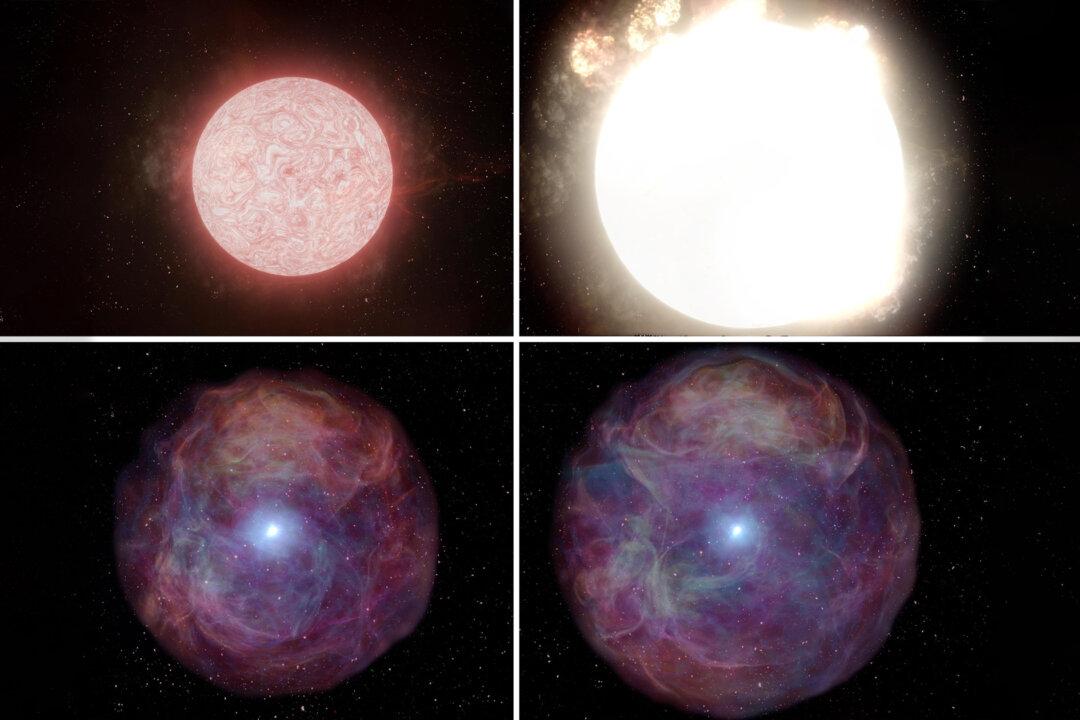A dying red supergiant star, 10 times more massive than our sun, has collapsed—and for the first time ever, Earth observatories have imaged a Type II supernova explosion in real time.
Astronomers at Hawaii’s Keck Observatory in the summer of 2020 were conducting the Young Supernova Experiment (YSE) transient survey when a bright light emanating from a red supergiant caught their attention. Closer inspection yielded the final 130-day chapter of a star’s cataclysmic demise.





